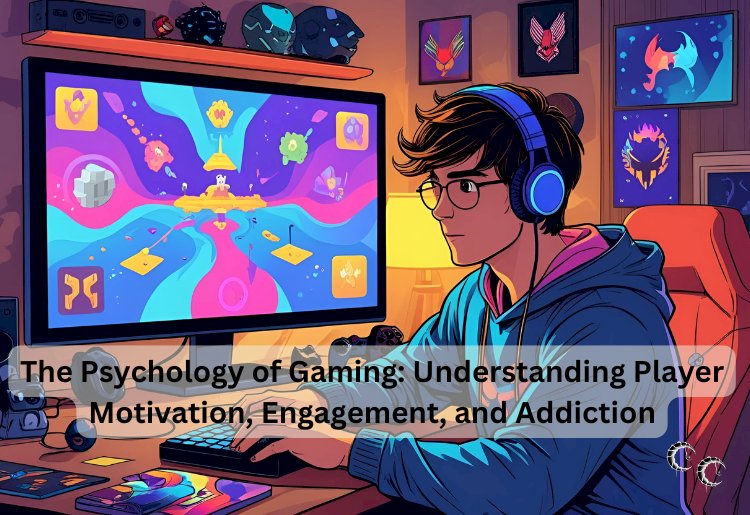The Psychology of Gaming: Understanding Player Motivation, Engagement, and Addiction

Gaming has evolved from a niche hobby to a global phenomenon, captivating millions of players across all age groups. Behind the immersive worlds and thrilling challenges lies a complex psychology that drives player behavior. Understanding the motivations, engagement factors, and potential risks of addiction can help both developers create better experiences and players maintain healthy gaming habits.
Player Motivation: Why We Play
Players are motivated by a variety of psychological needs and desires, often explained through models like Self-Determination Theory, which highlights three key drivers: autonomy, competence, and relatedness.
-
Autonomy: The desire to make meaningful choices and control one’s actions in the game world. Open-world and sandbox games often satisfy this need by allowing players to explore and create their own paths.
-
Competence: The drive to master skills, overcome challenges, and achieve goals. Games with leveling systems, achievements, and difficult bosses tap into this motivation.
-
Relatedness: The need to connect with others. Multiplayer games, social features, and cooperative gameplay foster a sense of community and belonging.
These motivations make gaming a compelling and rewarding activity, providing players with a sense of purpose, achievement, and social connection.
Engagement: What Keeps Players Coming Back
Engagement in gaming is sustained through various psychological triggers and game design elements:
-
Reward Systems: Players are encouraged by frequent rewards, such as points, loot, or story progression, which activate the brain’s dopamine pathways.
-
Flow State: Well-designed games balance challenge and skill to induce a state of “flow,” where players are fully immersed and lose track of time.
-
Narrative and Emotion: Compelling stories and emotional connections to characters deepen engagement by making players care about the game world.
-
Social Interaction: Cooperative and competitive multiplayer modes add a dynamic social layer that enhances motivation to keep playing.
By leveraging these elements, games maintain player interest and foster long-term involvement.
Addiction: When Gaming Becomes Harmful
While gaming offers many benefits, excessive play can lead to addiction, characterized by compulsive use despite negative consequences. Gaming disorder, recognized by the World Health Organization, shares traits with other behavioral addictions:
-
Loss of Control: Difficulty limiting time spent gaming.
-
Neglecting Responsibilities: Ignoring work, school, or relationships.
-
Withdrawal Symptoms: Feeling irritable or anxious when unable to play.
-
Continued Play Despite Problems: Persisting in gaming even when it causes harm.
Certain game design practices, such as loot boxes and endless progression loops, may increase the risk of addiction by exploiting psychological vulnerabilities.
Finding Balance and Healthy Gaming Habits
Awareness of the psychological forces at play can help gamers enjoy their hobby responsibly. Tips for healthy gaming include:
-
Setting time limits and taking regular breaks
-
Balancing gaming with other activities and social interactions
-
Reflecting on motivations and avoiding games that trigger unhealthy patterns
-
Seeking help if gaming interferes with daily life
Conclusion
The psychology of gaming reveals why players are drawn to immersive experiences and what keeps them engaged. While games can offer joy, challenge, and community, it’s important to recognize the fine line between healthy engagement and addiction. By understanding these psychological dynamics, both players and creators can foster a balanced and positive gaming culture.


























